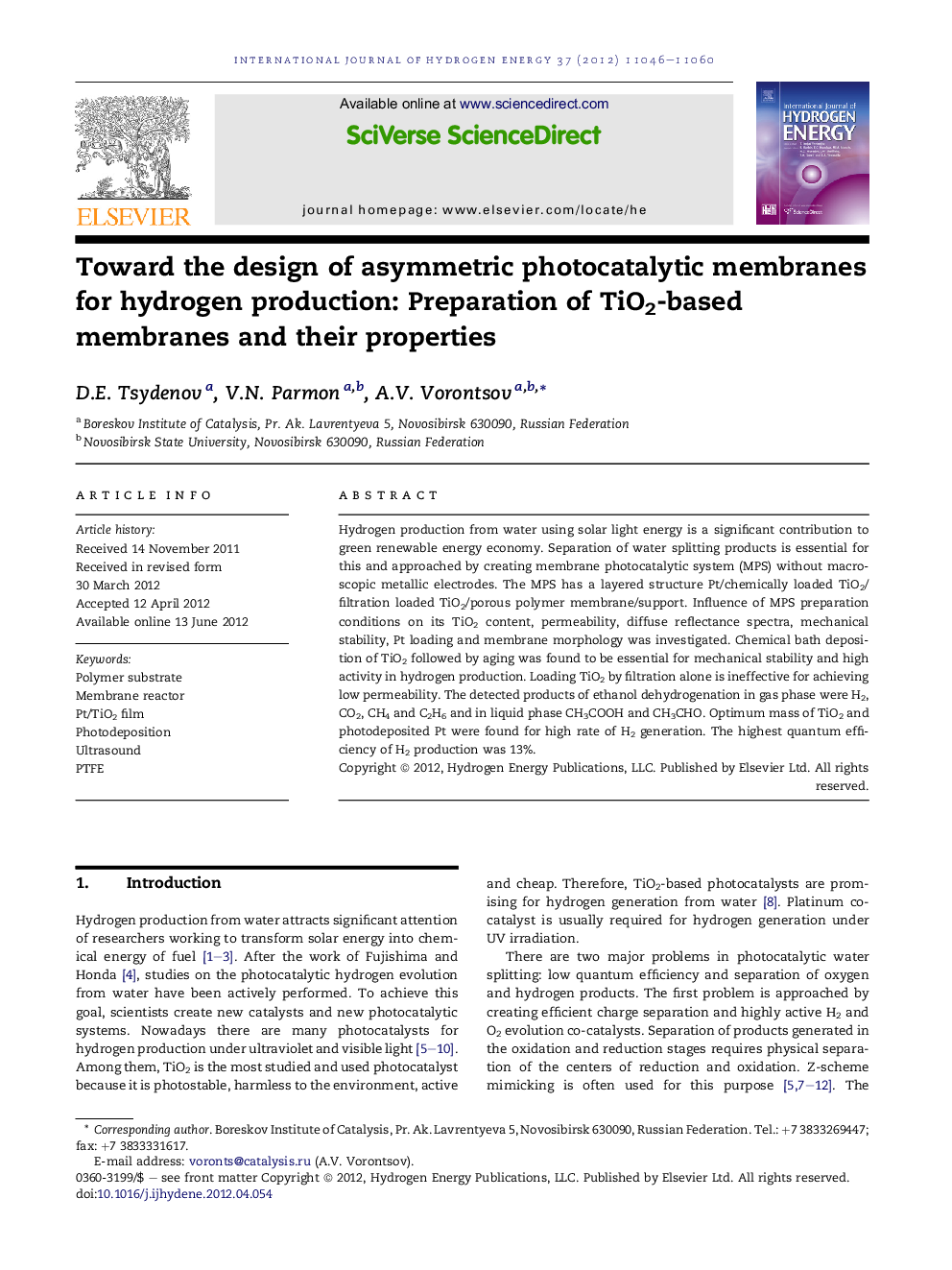| Article ID | Journal | Published Year | Pages | File Type |
|---|---|---|---|---|
| 1276269 | International Journal of Hydrogen Energy | 2012 | 15 Pages |
Hydrogen production from water using solar light energy is a significant contribution to green renewable energy economy. Separation of water splitting products is essential for this and approached by creating membrane photocatalytic system (MPS) without macroscopic metallic electrodes. The MPS has a layered structure Pt/chemically loaded TiO2/filtration loaded TiO2/porous polymer membrane/support. Influence of MPS preparation conditions on its TiO2 content, permeability, diffuse reflectance spectra, mechanical stability, Pt loading and membrane morphology was investigated. Chemical bath deposition of TiO2 followed by aging was found to be essential for mechanical stability and high activity in hydrogen production. Loading TiO2 by filtration alone is ineffective for achieving low permeability. The detected products of ethanol dehydrogenation in gas phase were H2, CO2, CH4 and C2H6 and in liquid phase CH3COOH and CH3CHO. Optimum mass of TiO2 and photodeposited Pt were found for high rate of H2 generation. The highest quantum efficiency of H2 production was 13%.
► Method for securing TiO2 to PTFE membrane has been developed. ► Conditions for Pt photodeposition on TiO2 loaded membrane were determined. ► Pt/TiO2/PTFE membranes were characterized by SEM, UV–Vis DRS, water permeability, Pt content. ► Products of ethanol decomposition were determined. ► Effects of TiO2 loading, Pt loading, TiO2 CBD loading and aging time of hydrogen evolution rate were measured.
